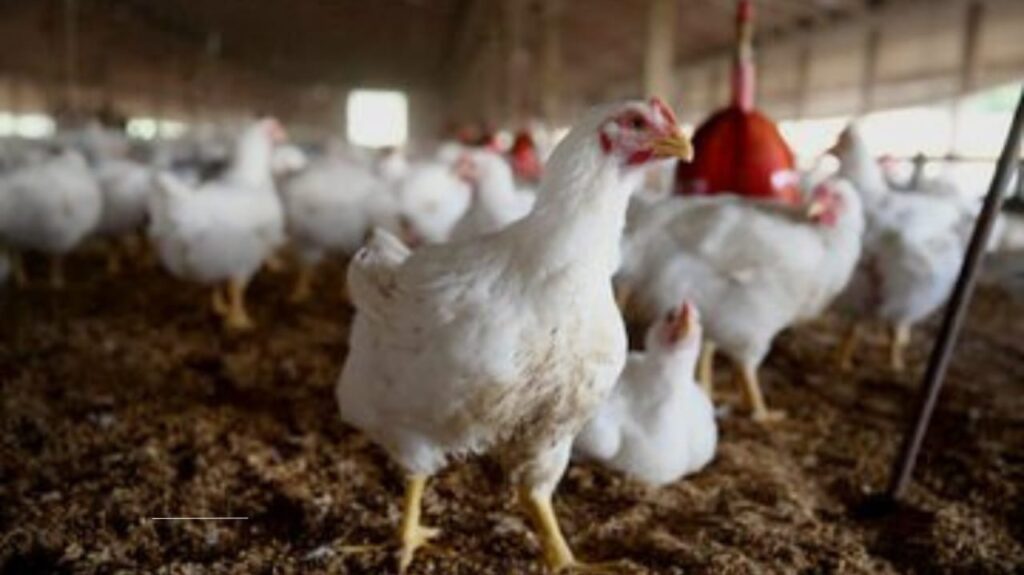
The poultry industry is under siege. A relentless bird flu outbreak is wreaking havoc, leaving farmers, businesses, and consumers grappling with the fallout. This isn’t just a story about sick birds—it’s a crisis with far-reaching consequences for food security, livelihoods, and the global economy.
What is Bird Flu, and Why is it So Devastating?
Bird flu, or avian influenza, is a highly contagious viral infection that primarily affects birds. While some strains are mild, others, like the current H5N1 strain, are highly pathogenic, meaning they can cause severe illness and death in poultry. The virus spreads rapidly through direct contact with infected birds, their droppings, or contaminated surfaces.
What makes this outbreak particularly alarming is its scale and persistence. Unlike previous outbreaks that were seasonal and localized, this wave of bird flu has been relentless, affecting farms across multiple continents for over a year. According to the World Organisation for Animal Health (WOAH), more than 200 million birds have been culled worldwide since late 2021 to curb the spread.
The Toll on the Poultry Industry
The poultry industry is one of the most vulnerable sectors to bird flu outbreaks. When the virus hits a farm, the standard protocol is to cull the entire flock to prevent further spread. This means millions of chickens, turkeys, and ducks are being euthanized, leading to staggering financial losses for farmers.
In the United States alone, the current outbreak has resulted in the loss of over 58 million birds, making it the worst bird flu crisis in the country’s history. The economic impact is equally devastating. The U.S. Department of Agriculture (USDA) estimates that the outbreak has cost the industry more than $3 billion in direct losses, including the cost of culling, disposal, and cleaning infected farms.
But the damage doesn’t stop there. The ripple effects are felt across the supply chain. With fewer birds available, egg and poultry meat prices have skyrocketed. In 2022, egg prices in the U.S. surged by nearly 60%, hitting record highs. For consumers, this means higher grocery bills, and for businesses like restaurants and bakeries, it translates to increased operating costs.
Farmers on the Frontlines
For poultry farmers, the outbreak is a nightmare. Many have spent years, if not decades, building their flocks and businesses, only to see them wiped out in a matter of days. The emotional toll is immense, but so is the financial strain.
Take the case of John Miller, a third-generation turkey farmer in Minnesota. When bird flu was detected on his farm, he had to cull his entire flock of 50,000 turkeys. “It’s heartbreaking,” he says. “These birds are like family to us. But the hardest part is knowing that it could happen again. The virus is still out there.”
Farmers like Miller are doing everything they can to protect their flocks. Biosecurity measures, such as disinfecting equipment, restricting farm access, and using protective clothing, have become the new norm. But even with these precautions, the virus is hard to contain. Wild birds, which can carry the virus without showing symptoms, are a constant threat.
The Role of Wild Birds in the Spread
Wild birds, particularly migratory waterfowl like ducks and geese, are natural carriers of the bird flu virus. They can spread the virus over long distances as they travel along migratory routes. This makes it nearly impossible to predict where the virus will strike next.
In Europe, the outbreak has been particularly severe, with countries like France, Germany, and the Netherlands reporting record numbers of cases. In the UK, the Royal Society for the Protection of Birds (RSPB) has warned that the virus is now spreading among wild bird populations, posing a risk to endangered species.
The situation is equally dire in Asia. In Japan, over 10 million birds have been culled since late 2021, while in South Korea, the government has declared a “national emergency” to combat the outbreak.
The Global Impact
The bird flu crisis is not confined to any one region—it’s a global problem. According to the Food and Agriculture Organization (FAO), more than 70 countries have reported outbreaks since 2021. This has disrupted international trade, with many countries imposing bans on poultry imports from affected regions.
For developing nations, the impact is even more severe. In countries like Ghana and Nigeria, where poultry farming is a critical source of income and nutrition, the outbreak has pushed many small-scale farmers into poverty.
The Threat to Food Security
As the poultry industry struggles to recover, concerns about food security are growing. Poultry is one of the most affordable and widely consumed sources of protein worldwide. In low-income countries, eggs and chicken are often the only sources of animal protein for millions of people.
The FAO has warned that the ongoing outbreak could exacerbate global hunger, particularly in regions already facing food shortages due to conflict, climate change, and economic instability.
The Human Health Risk
While the current strain of bird flu primarily affects birds, there is always a risk of it jumping to humans. Since 2003, the H5N1 virus has infected over 800 people worldwide, with a mortality rate of around 50%. Most cases have been linked to direct contact with infected birds, but scientists worry that the virus could mutate and become more transmissible among humans.
“The risk to human health is low at the moment, but we can’t afford to be complacent,” says Dr. Maria Van Kerkhove, an infectious disease expert at the World Health Organization (WHO). “We need to monitor the situation closely and be prepared for any changes.”
The Search for Solutions
Efforts to combat the outbreak are underway on multiple fronts. Vaccination is one option, but it comes with challenges. Vaccinating poultry can reduce the spread of the virus, but it’s expensive and logistically complex, especially in countries with large poultry populations.
Another approach is to improve biosecurity measures on farms. This includes everything from better sanitation practices to stricter controls on the movement of birds and people. Some countries are also investing in early detection systems to identify outbreaks before they spiral out of control.
Researchers are also working on developing more resilient bird breeds that are less susceptible to the virus. While this is a long-term solution, it could help reduce the impact of future outbreaks.
The Economic Fallout
The economic consequences of the bird flu outbreak extend far beyond the poultry industry. In the U.S., for example, the loss of millions of birds has led to a shortage of poultry products, driving up prices and contributing to inflation.
The outbreak has also disrupted the supply of other products, such as feathers for down jackets and pet food made from poultry byproducts. For businesses that rely on these materials, the shortage has created additional challenges.
The Environmental Impact
The mass culling of birds has raised concerns about its environmental impact. Disposing of millions of bird carcasses is a complex and costly process. In some cases, the birds are buried in large pits, which can contaminate soil and groundwater if not done properly.
There are also concerns about the impact on biodiversity. As the virus spreads among wild bird populations, it could threaten endangered species and disrupt ecosystems.
The Road Ahead
The bird flu outbreak is a stark reminder of the interconnectedness of our food systems, economies, and ecosystems. While the immediate focus is on containing the virus and supporting affected farmers, there is also a need for long-term strategies to prevent future outbreaks.
This includes investing in research, improving biosecurity measures, and strengthening international cooperation. As the world grapples with the challenges of climate change, population growth, and food insecurity, the lessons learned from this crisis will be invaluable.
